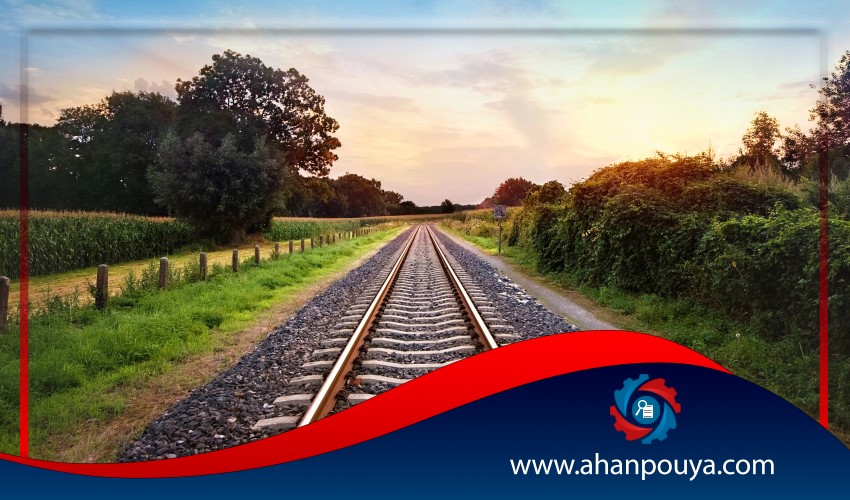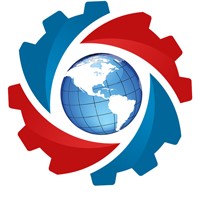
The first trains to be built were those carried by horses and wagons That 's why they were made of wood . From the 1760s, cast iron strips were installed on these wooden rails, and the rails were converted from wood to iron. Still, they were easily broken when passing heavy loads, but the advantage was that they were built very quickly and cheaply. Another disadvantage of these rails was that the upper straps were sometimes torn and intersected with the floor of the wagon. As a result, even though they are cheap to build, their maintenance and repair costs are very high. To improve the rails, they turned the combined cast iron and wood rails into flange cast iron rails, and on the other hand, made the wheels of the wagons flat.
Unfortunately, cast iron rails broke very easily with a little extra pressure, which was a big hassle because the rails had to be constantly repaired. Steel is a combination of several alloys and is much stronger than iron, and if it is standard, it will not deform or break even under very heavy loads. Steel rails provided the bed for the construction of longer rails. One of the major problems in building railroad tracks was that they had to be built in one piece, so they could not build railroad tracks on very long or winding routes. For this reason, they gradually used welding to connect the rails. By doing this, the railway rails are easily made in the factory and welded on site.
The appearance of the railway consists of a rolled steel section that is placed in the form of two parallel lines and then fixed to the chassis with bolts and nuts. Since the most important function of the track is to support the load of the vehicle and to guide it properly, it must be constructed so that the external input force is distributed throughout it. Otherwise, more pressure is applied to some points, causing the rail to break and the train to deviate. In order to spread the force, fasteners are used to connect the railway tracks. This is technically very important because it will reduce the friction between the vehicle and the rail. As a result, there is no obstacle to movement and the rails do not break due to the force of the train.
Other technical specifications that must be considered for the construction of railway tracks include use, dynamic and static stresses applied, the amount of wear and corrosion and other available forces. If all these things are observed in the construction of rails, quality rails will be produced. To do this, the rail production process must be very precise and the secondary metallurgical operations in the ladle furnace and degassing must be performed properly under vacuum. After the production of rails, the produced rails must be thoroughly inspected in terms of chemistry, dimensions, appearance defects of ingot surfaces and other tests, and be technically acceptable according to the standards.
As the name implies, this type of rail is used for the route of mining wagons. These rails in mines increase the speed of work and material transfer. As a result, miners extract most of their energy instead of transporting it, ultimately generating more profit. Therefore, proper use of mineral rail lines will significantly increase the exploitation of mines. So the cost of mining rails is an investment .
These rails are produced based on the type of application in different types with the names of KP, A, QU, CR and MRS. Of all these rails, Type A is the most widely used.
These types of rails are the most widely used types of rails that are used for intercity and intercity wagon transportation lines, and the more a country is able to provide it, the more and easier it will be to transport and transport trains.
Each rail that is built must have standards based on the type of application, the basis of which is the axial load applied to the rail and the speed of the vehicle on it. For example, UI360 steel is used for an axial load of 25 tons in Iran. In fact, different countries have different priorities for having a railroad, some of which are global. The most important global standards for railway construction are:
1.European standard or S type
2.Russian standard or R type
3.Japanese standard or JIS type
Railway construction has many complex steps that must be performed by experienced supervising engineers. If we want to produce railway rails according to EN 13674-1 standard, the following points must be observed :
Melted nitrogen is usually considered to be less than 120 ppm in the construction of other steel bars, but not more than 90 ppm in railways.
The amount of hydrogen in the rails should be less than 5.2 ppm. The amount of this substance is very important and therefore in the last stage of casting its amount is measured again.
The maximum amount of melting oxygen for making rails according to this standard is 20 ppm.
This test is performed to measure the dispersion and distribution of sulfur compounds and is compared with specific standards.
The stiffness and strength of the railway is very important, so after the production, chemical analysis must be done to determine this parameter.
This parameter must also be checked after construction, which is a criterion for measuring the hardness of steel rails.
The amount of oxide impurities in the manufactured rails is very important and must be exactly according to the standard. The acceptable standard for oxide impurities is as follows :
K3 <10 for at least 95% of the samples
K3 <20 for up to 5% of samples

Ahan Pouya with more than a decade of best-selling experience, adheres to professional and ethical principles in the field of selling and buying at inside and outside the borders of Iran, helping you in the steel industry.